Stress Less When Packing for Your Next Trip With These Compression Sacks
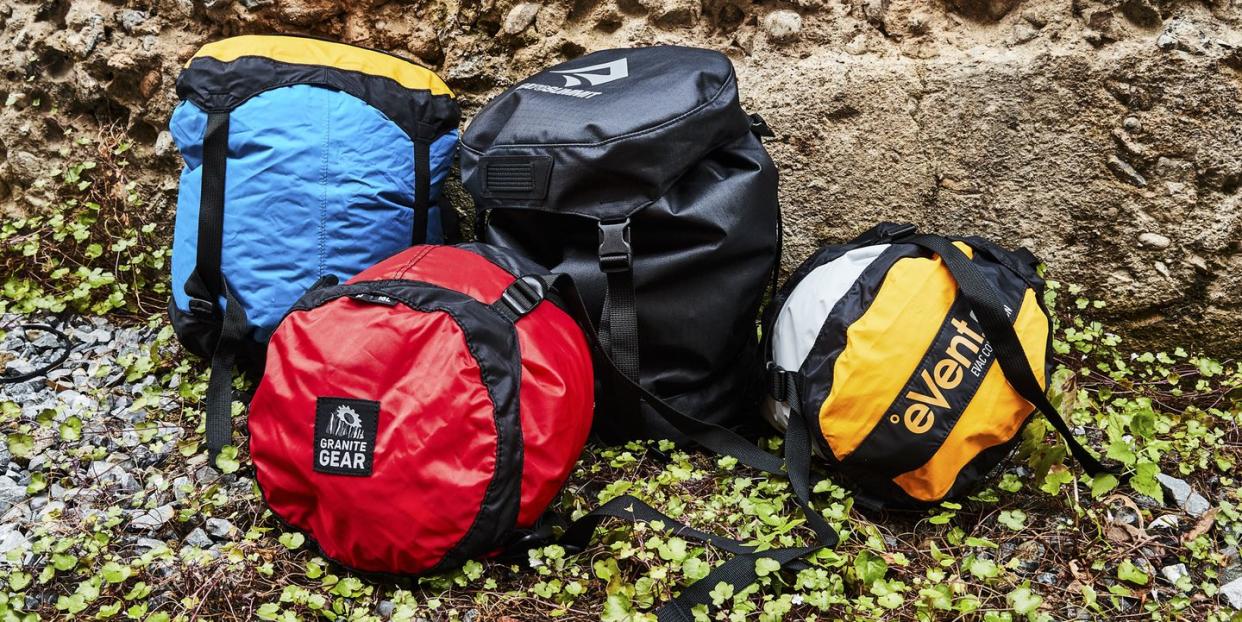
"Hearst Magazines and Yahoo may earn commission or revenue on some items through these links."
Compression sacks give you a way to condense the contents of your luggage or backpack into the smallest, more dense bundle possible. A specialized version of the more ubiquitous “stuff sack,” compression sacks feature the ability to squeeze all the air out of them to optimize how you pack the bulk of your belongings. Typically, compression sacks reduce the volume of the contents by one-half to one-third, leaving plenty of room for that extra travel accessory you wish to bring, like a water bottle or a portable espresso machine.
If you’re a chronic over-packer or a person who always considers every ‘what if’ scenario possible when figuring out what to take on a trip, compression sacks have the potential to change your life – or, at the very least, your ability to close your suitcase.
The Best Compression Sacks
Best Overall: Sea to Summit E-Vac Compression Dry
Best Value: REI Lightweight Compression
Best as a Set: Sea to Summit Ultra Sil Dry Bag
Best Lightweight: Hyperlite Roll Top Stuff Sack
Best Waterproof: SealLine Blocker Compression Waterproof Stuff Sack
Best for Kayaking or Canyoneering: Sealine Discovery View Dry Bag
Best Heavy Duty/Most Durable: Granite Gear Round Rock Solid Compressor
The Expert: I have hiked, backpacked, camped, and bikepacked through a good portion of this planet, including the Borneo jungle, the Karakoram Mountains, the Pamirs, and Eastern and Western Europe. I’ve written about adventure travel and gear for Dirt Rag Magazine, Adventure Cycling, BBC Travel, Popular Science, Fodors, Popular Mechanics, Bicycling, and many others.
I’m also, despite (or maybe because of) this, what some would consider an over-packer. I take the “Final Destination” approach to planning, where my mind cycles through every possible mishap that could happen in any given scenario and then pack accordingly to prevent and survive each of them. As a result, I have spent years trying and using all sorts of packing organizational gear including a plethora of compression sacks.
What to Consider When Shopping For Compression Sacks
You can put most anything you want into a compression sack. In my experience, hikers, backpackers, and bikepackers frequently use them for sleeping bags, pillows, and clothing, especially with bulky cold weather gear like down jackets. They’re great for keeping your stuff organized in your pack so you can find specific items easily.
Closure And Compression
Packed compression sacks allow you to push all of the air out of them in one of two ways. Some sacks use a one-way purge valve, which releases trapped air when you push down on the sack. Others are made with permeable fabrics like eVent, that let air naturally escape, while keeping water from getting in. In addition, many sacks feature compression straps, which allow you to thoroughly and evenly extract the air from inside the bag.
Both methods are effective, though permeable fabrics will eventually draw air back into the sack if you don’t add an additional layer of cover over them. Thankfully, most sacks come with fabric end-covers so you can control their airflow.
To keep the air out, compression sacks usually close with a drawstring or a rolltop mechanism. Rolltop sacks provide more protection from moisture than drawstrings, as well as better compression.
Compression sack capacity
Manufacturers usually measure the capacity of compression sacks in liters (L) and cubic inches. Most manufacturers make them in a range of sizes, from a 3-liter bag for small personal items to a 35-liter option for a sleeping bag or lining a hiking backpack.
While you can line a backpack or suitcase with a compression sack, I find it’s better to separate the contents of your bag into many smaller bags, rather than buying a single sack to compress everything. I usually use a few sacks in the 5 to 10 liter range, which allows me to separate and organize my clothing and gear. It also makes it easier to get to important items, like a jacket, without decompressing the whole bag.
Waterproof or not
Personally, I tend to always err on the side of waterproof or, at the very least, water resistant. Most backpacks and many cycling panniers are not waterproof themselves and packing items in waterproof stuff sacks eliminates the need for bulky rain covers. It also means that the contents of your pack won’t get wet when it’s sitting out on a tarmac waiting to be loaded onto an airplane or strapped to the top of a taxi in Indonesia during a sudden rainstorm.
Compression sack weight
Backpackers, through hikers, and bikepackers tend to be very conscious of every ounce they carry (with good reason). If you intend to use compression sacks for any of these activities, it’s important to keep in mind that compressing your pack won’t make it any lighter. If you need to keep weight in mind, don’t add more gear to your pack just because you have extra room. If you’re more of a rolling suitcase or bag kind of traveler, a couple extra ounces per stuff sack probably won’t matter much.
Though the difference in weight is very slim, you should also keep in mind that some compression sacks are designed to be ultralight, minimizing their impact on the weight of your pack.
Durability
If you’re packing for an outdoor adventure, it pays to spring for a more durable compression sack made from heavier fabrics to endure the elements and direct contact with sharp sticks and rocks. Some compression sacks are waterproof, which you may want to consider if you’re camping near a lake or bringing your gear on a kayaking trip.
How We Selected The Best Compression Sacks
I’ve always been a sucker for gear that makes travel and adventure more efficient and organized, so I’ve personally tested dozens upon dozens of compression sacks. (Only my credit card company knows the exact number. I prefer to not keep track.) To pick my favorites, I evaluated their durability, waterproofness, and other features you didn’t even know you needed, such as being able to see what’s inside without opening it.
I’ve also swapped recommendations with many of my fellow adventurers over the years about their favorite gear. (If you’ve ever hung out with a bunch of backpackers, you’ll know that inevitably you’ll end up comparing favorite gear and debating the finer points of what is and isn’t actually waterproof.) I also did plenty of research to keep up to date with the latest advances in materials and fabrication methods, including sustainability and environmentally friendly fabrics and processes.
eVac Compression Dry Bag
Sea to Summit’s eVac compression dry bags feature a rolltop closure secured with a field repair buckle. The base of each bag is made from an air-permeable fabric that pushes air out as it’s compressed.
To help with compression, it features four ladder lock straps, which eliminate bulging and allow you to compress the contents evenly for a more packable bag. A robust nylon webbing handle on the base gives you a secure grab point to easily carry it. The bag is also waterproof so your clothes and valuables stay dry, even through a storm.
I’ve used my Sea to Summit eVac bags on all sorts of excursions (many of which ended with the bags spending more time in the water than I anticipated). Trekking through the Borneo jungle, I crossed the vast – and very fast flowing – Kapuas River multiple times, plunging into cold, chest-level water with packs, trekking poles, and the firm grip of one of the local trekking guides to help keep me upright. I didn’t always stay upright, but the contents of my dry bag stayed dry even when I got soaked.
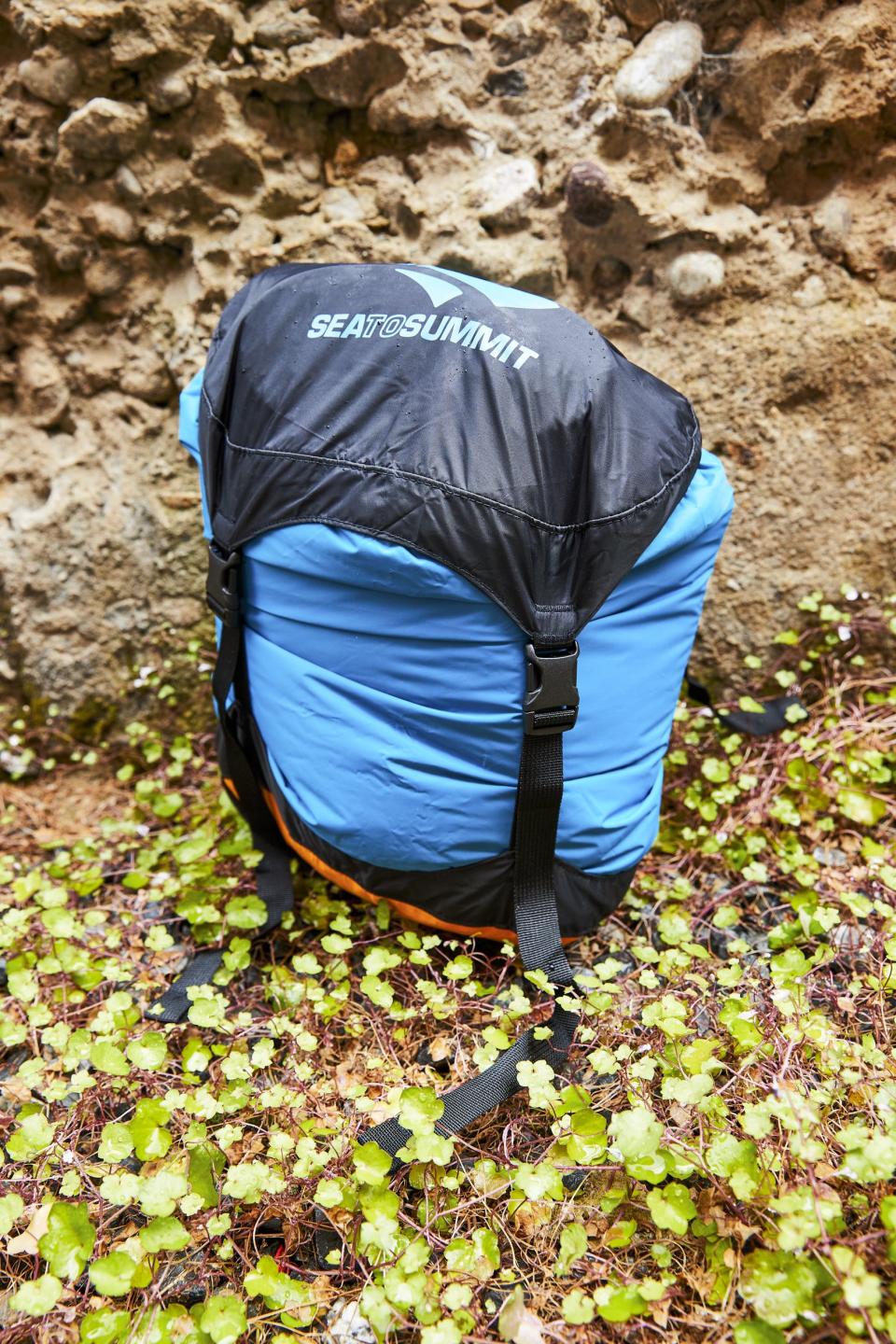
eVac Compression Dry Bag
$39.95
rei.com
Trevor RaabLightweight Compression Sack
The first compression sacks I ever bought were REI brand, and I still use them on occasion for short trips with a suitcase (as opposed to a backpack). They aren’t made with high-end technical fabrics, but after using mine for many years, they are clearly quite tough.
Made from strong, durable ripstop nylon, the REI co-op’s compression sacks are lightweight and sturdy. Depending on what size you pick, each one comes with either three (10L) or four (15L and 20L) compression straps.
For around half the price of our other picks, these are perfect if you need to add an extra sack to your collection mid-adventure, or if you simply want to keep equipment costs down.
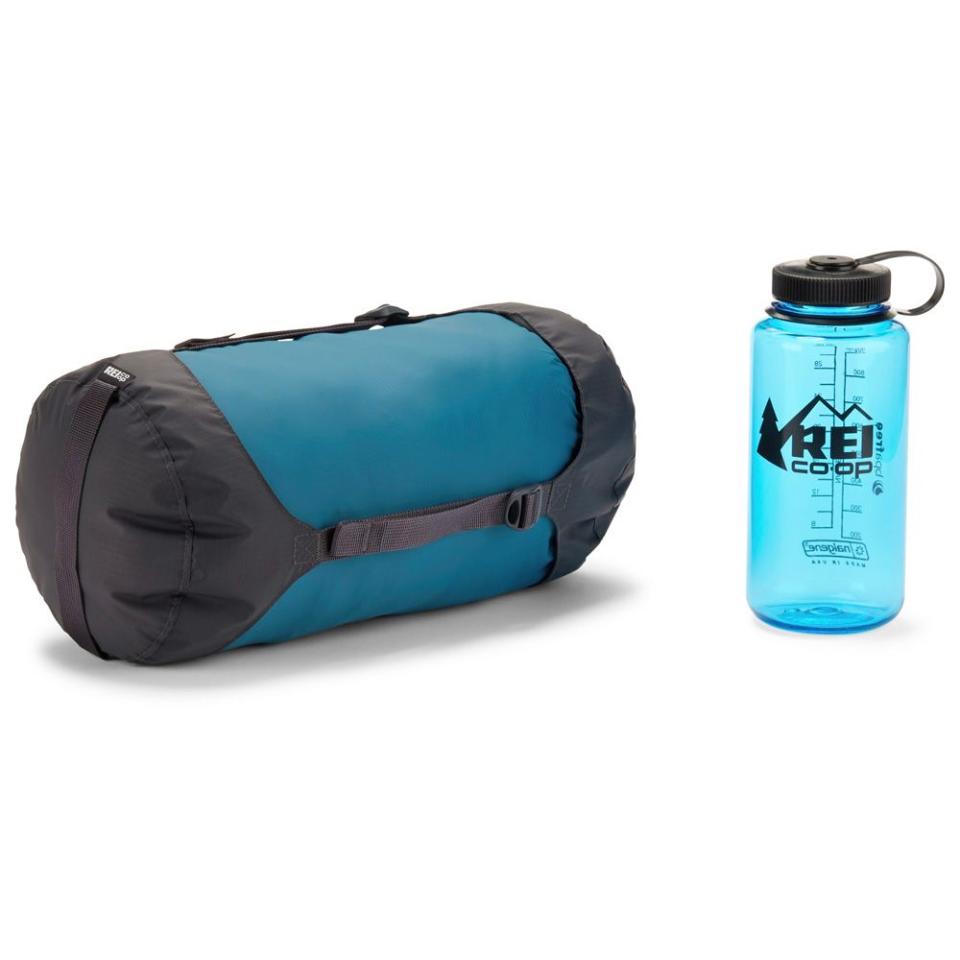
Lightweight Compression Sack
$26.95
rei.com
Ultra-Sil Compression Sack
A full set of Sea to Summit’s lightweight “Ultra-Sil” compression sacks will perfectly prepare you for just about any backpacking adventure when you’re counting every ounce.
You can get a wide range of sizes: The smallest bag, at 3.3L, is perfect for small clothing items like socks, hats and gloves. The 6L can compress additional layers and a puffy coat. I use the 10L bag to protect my Rab Neutrino sleeping bag from getting wet. There are also larger options if you’re looking for a backpack liner.
Sea to Summit’s Ultra-Sil fabric is semi-translucent, so you can see what’s inside each bag and find what you’re looking for quickly. While the fabric is waterproof, it is not sealed, so the contents will get wet if the bags get fully submerged in a river, lake, ocean, or puddle.
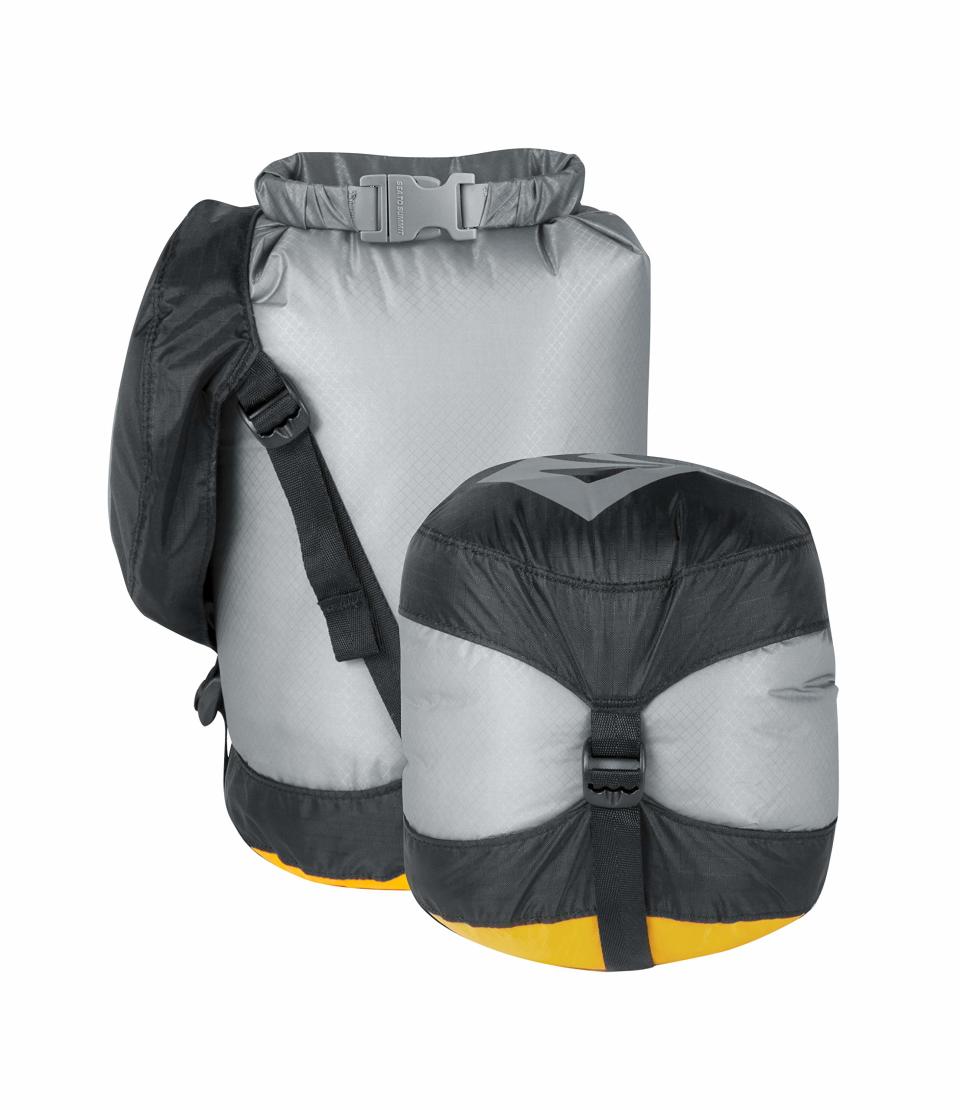
Ultra-Sil Compression Sack
$48.89
amazon.com
Trevor RaabRoll Top Stuff Sack
Made with 100-percent waterproof DCF Dyneema fabrics, Hyperlite’s compressible stuff sacks are an extremely lightweight storage solution. With four sizes to choose from, including a gigantic 43 liter bag, there’s a perfect option for every use case, from food bag to pack liner.
Dyneema fibers, classified as ultra high molecular weight polyethylene, have a strength-to-weight ratio that makes them one of the strongest fibers in the world. The top closure has a rolltop design with side-release buckles for a secure fit.
I first discovered these compression sacks during a five-month bicycle trip following the Silk road across Central Asia. A few of my fellow cyclists had these sacks.
One of them had an unfortunate encounter with a rocky, detritus-strewn river bank on his way to do some laundry. He tumbled down a sharp decline to the water holding onto two of these compression sacks. Thankfully, all he suffered were scratches and bruises. The sacks were completely unscathed: not a tear on any of them. We didn’t test them further, but I was impressed with how they held up.
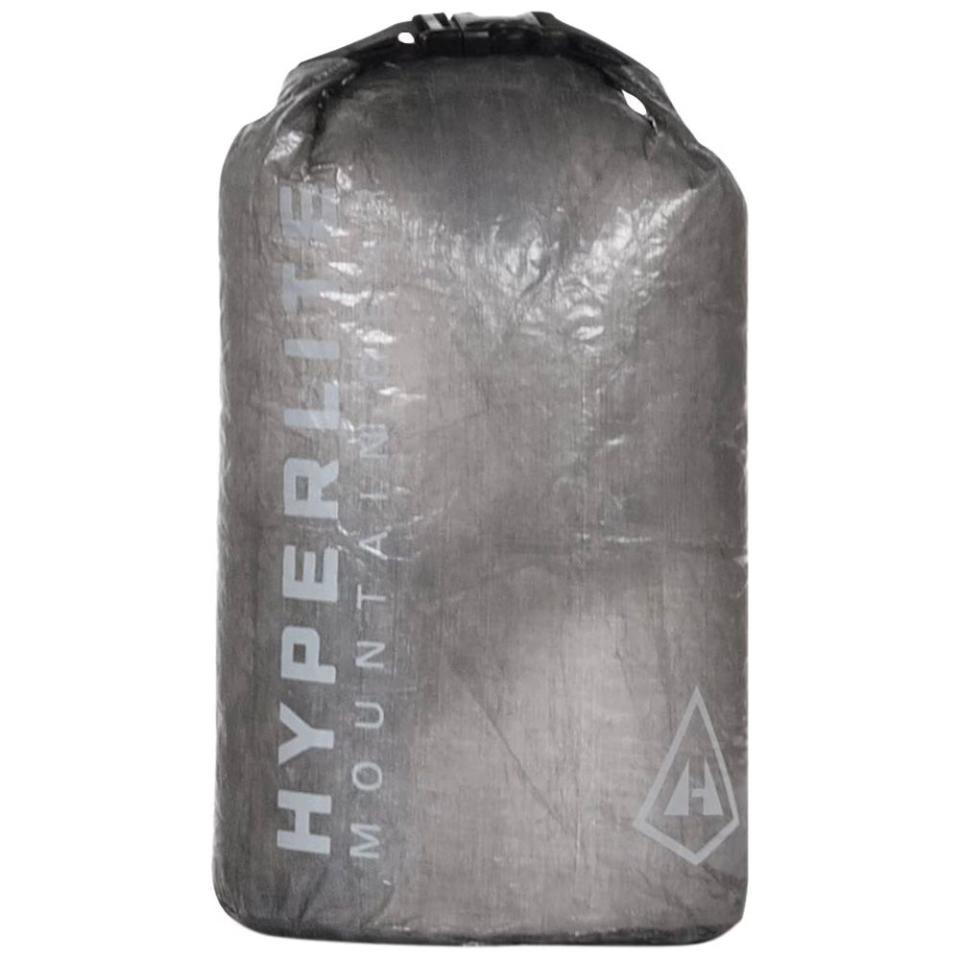
Roll Top Stuff Sack
$75.00
backcountry.com
Blocker Compression Dry Sack
Unlike most compression sacks, the SealLine Blocker line packs into a rectangular shape with a flat bottom, which the company claims packs 20-percent more efficiently than round stuff sacks. As anyone who has ever packed a backpack with stuff sacks knows, round bags create unutilized pockets in your pack, which you have to fill in with whatever will fit.
A rectangular sack pretty much eliminates the issue, so long as everything’s packed evenly and compressed symmetrically. See? Geometry is useful in everyday life.
Each compression sack features a buckled rolltop closure, four compression straps, and a waterproof Purge Air valve that vents trapped air for easier compression. They’re also completely waterproof, even when fully submerged, so your gear will stay dry even if you find yourself neck-deep in a river that was supposed to be “waist-high.”
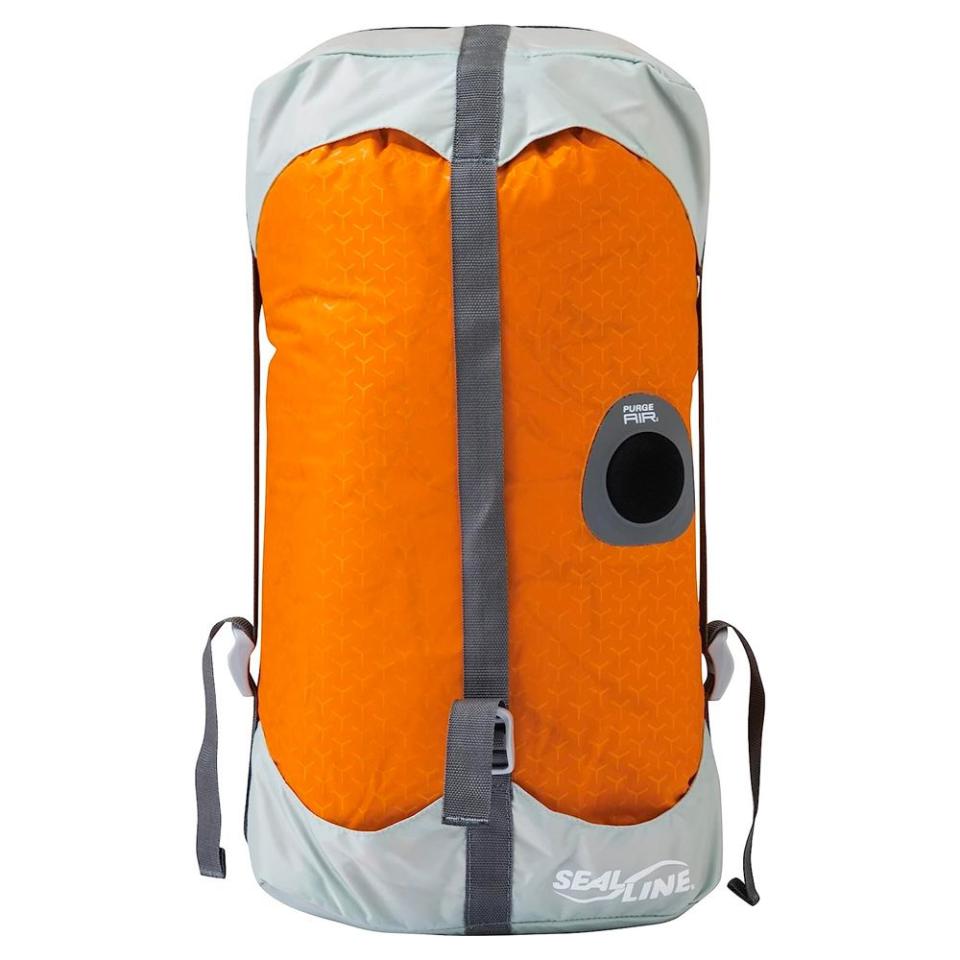
Blocker Compression Dry Sack
amazon.com
Discovery View Dry Bag
SealLine manufactures the majority of its gear in its own Seattle-based factory. The company prides itself on creating a diverse range of products to fit all kinds of adventuring scenarios.
Case in point, its Discovery View Dry bags are perfect when you’re perched on the side of a canyon, or any other spot where you can’t easily rummage through your pack. The translucent, waterproof fabric allows you to easily find what you need before you open the bag.
If you buy a set, you can get bags with color-coded oval bottoms to help you keep track of which bag you’re looking through at a glance.
The DrySeal rolltop closure and waterproof PurgeAir valve make it easy to get optimal compression. One small thing to keep in mind, though: These bags are made from waterproof fabric, but the closure is not watertight. Your stuff will get soaked if the sack goes overboard.
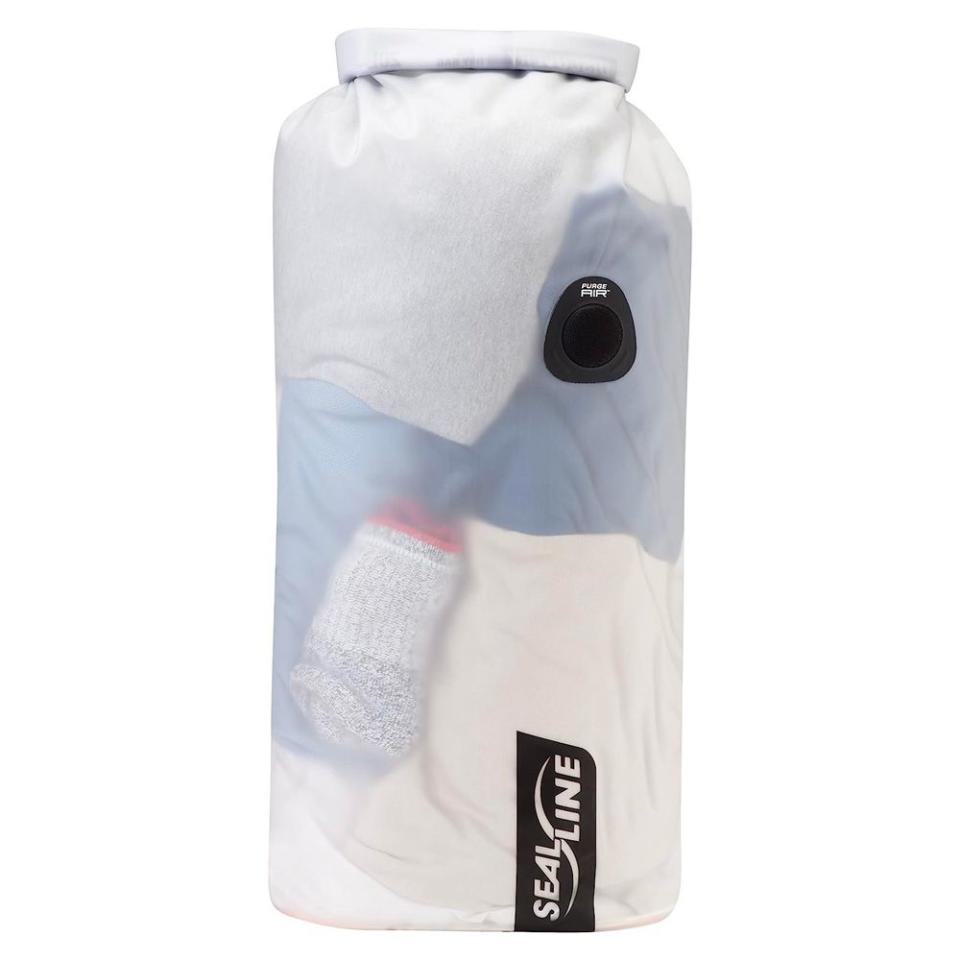
Discovery View Dry Bag
$45.95
amazon.com
Round Rock Solid Compression Sack
Granite Gear’s Round Rock Solid compression sacks transform bulky, fluffy items into small, rock-hard things so you can easily fit them into your pack. Each pack is made from 210-denier nylon, which is sturdier and more durable than the build of most other packs, but still relatively lightweight.
It cinches closed with a drawstring closure at one end, and has a fabric “lid” that fits over the opening and four buckled straps to compress the bag’s contents.
Granite Gear products are known for their durability (as strong as granite). While the brand isn’t as well-known as Sea to Summit or Sealline, it has attracted what some might call a cultish following among those who like to travel to some of the world’s harshest environments (Everest, the North and South Poles, and the New York City subway system).
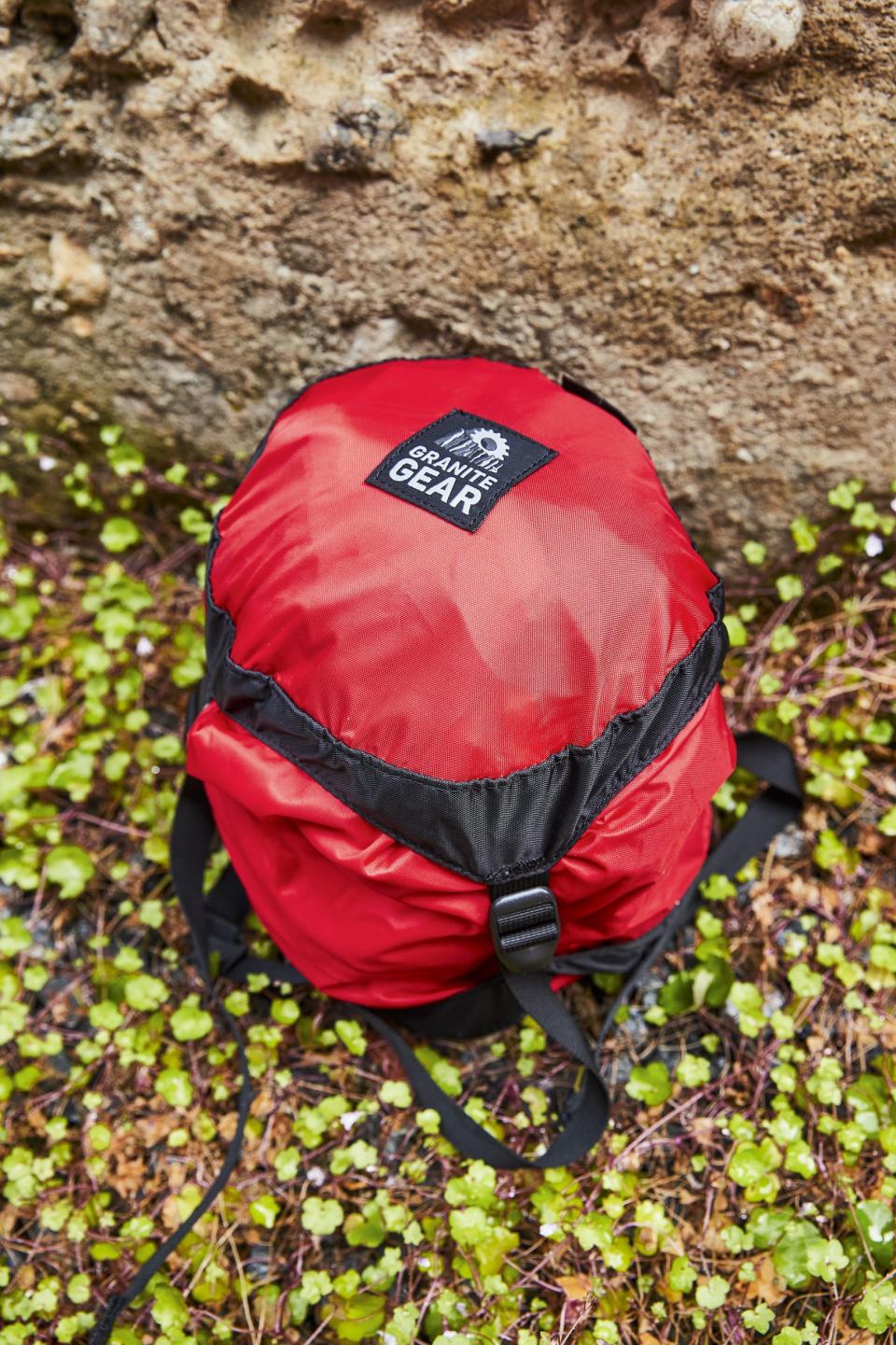
Round Rock Solid Compression Sack
$28.95
backcountry.com
Trevor RaabQ+A With Expert Traveler Vanessa Nirode
How do you use/pack a compression sack?
First, place your items–clothing, sleeping bag, or otherwise–into the bag. Ideally, you want to fill the bag to the top, though you don’t need to (especially if it has a rolltop closure). That said, should be at least half-full: The compression feature may not work if it’s nearly empty.
If the sack has a rolltop closure, press down on the sack with your body weight as you fold and roll. You should hear air getting pushed out of the vent or permeable fabric.
If the sack has a top and bottom lid with connecting straps, close the buckles then tighten each strap a small amount in turns. Don’t tighten one as much as you can then move onto another. Do one a little, then the next one, and the next, and repeat a few times until you can compress no further. Tightening the straps in this manner leads to even (and more compact) compression for the whole bag.
Do clothes wrinkle in compression sacks?
Yes, your clothes will probably wrinkle when compressed in a sack. You are squeezing them tight to conserve space, and they may not keep their shape in the bag. You can minimize wrinkling by folding or rolling your clothes before putting them in the bag. I prefer rolling, since it eliminates the hard creases.
Of course, if you are making a hasty retreat, the ‘shove everything as quickly as you can into a sack’ method of packing is completely acceptable.
Do compression sacks damage down?
Compression sacks will not damage your down jackets, pillows, or sleeping bags, unless you leave the item compressed in a stuff sack for an extended period of time. After several months in a compressed bag, down items may lose their resiliency and lofting (re-fluffing) ability.
You should never store your sleeping bags (or down coats) rolled and compressed. Instead, drape them over a hanger for long term storage.

You Might Also Like

